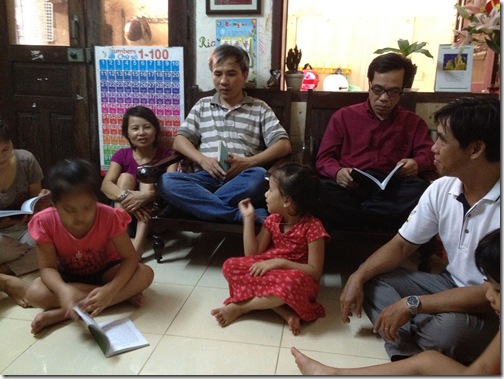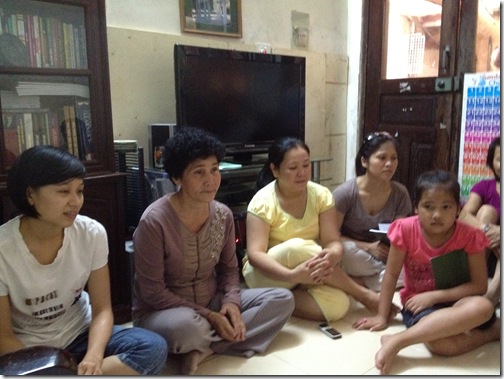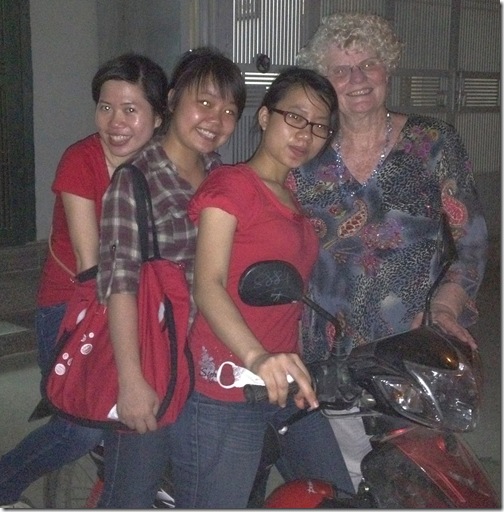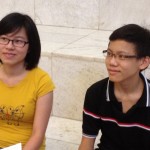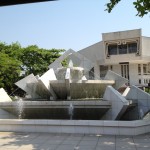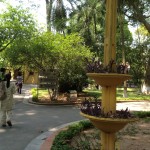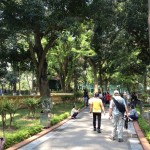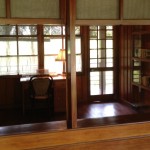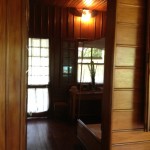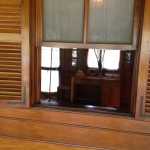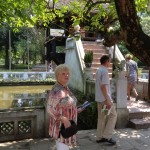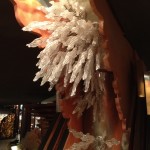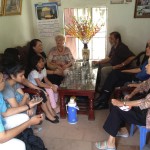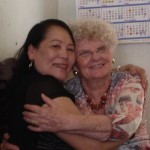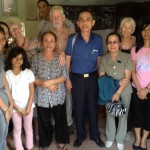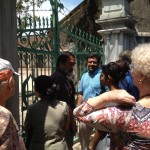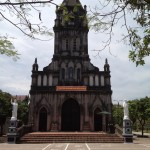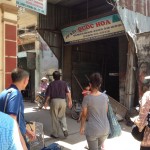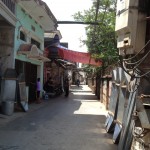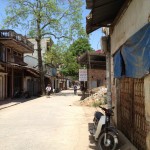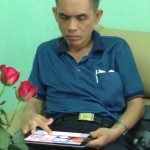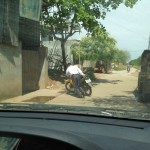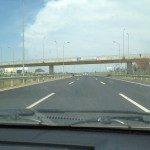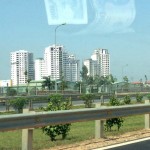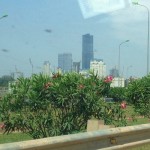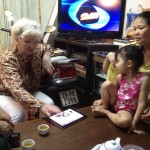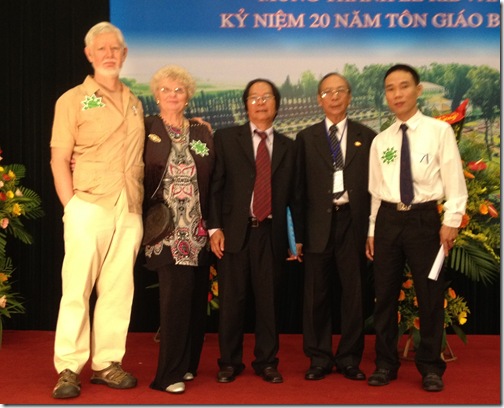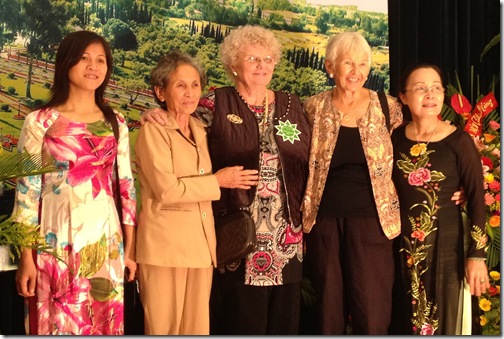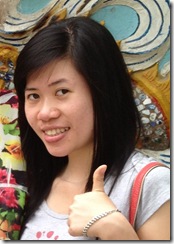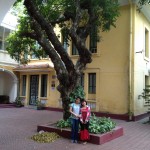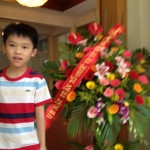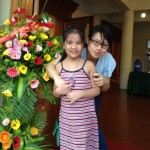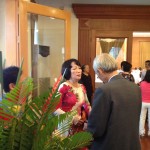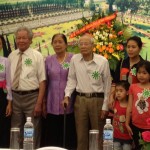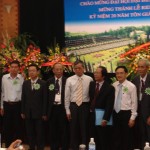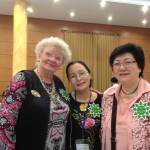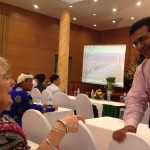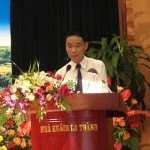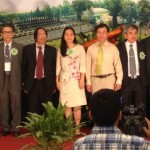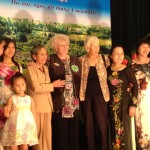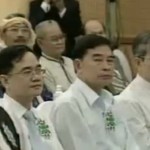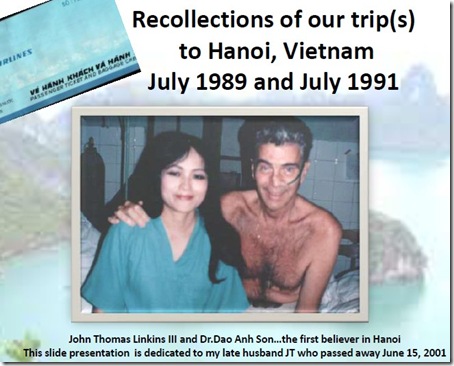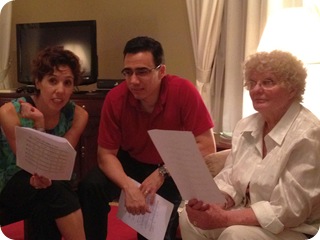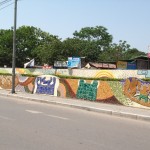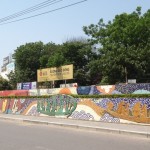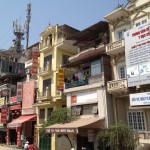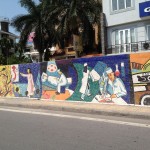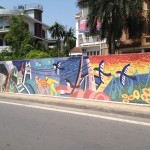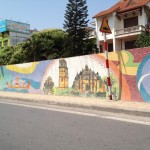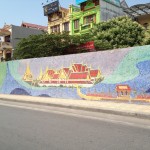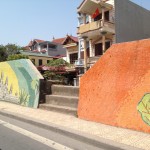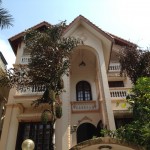For Zabine Maryam (Linkins) Van Ness, this has been a journey of 20 years. For me, it only felt like one.
 We arrived Sunday morning at the hotel in Hanoi where the Baha’i community was gathering to celebrate the 20th anniversary of its founding. Stunning floral arrangements were everywhere. Many of these, I hear, were sent by the government, which recognized the Baha’i Faith here four years ago and with which the friends now have very good relations. Wishing to offer support, government officials were taken aback to discover that the Baha’is could not accept funding from outside sources. They therefore sent flowers as – I assume – did many other institutions and individuals.
We arrived Sunday morning at the hotel in Hanoi where the Baha’i community was gathering to celebrate the 20th anniversary of its founding. Stunning floral arrangements were everywhere. Many of these, I hear, were sent by the government, which recognized the Baha’i Faith here four years ago and with which the friends now have very good relations. Wishing to offer support, government officials were taken aback to discover that the Baha’is could not accept funding from outside sources. They therefore sent flowers as – I assume – did many other institutions and individuals.
Traditional Vietnamese costumes were much in evidence, alongside Western business attire. Throughout the day, Zabine was warmly greeted both by Vietnamese friends and by foreign dignitaries who remembered her humanitarian work in their respective countries.
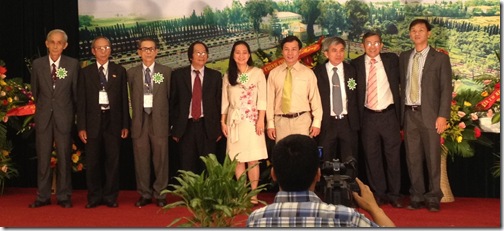
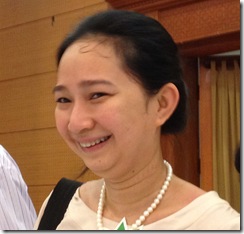 The new National Spiritual Assembly of the Baha’is of Vietnam, elected the day before at the annual national convention, was introduced. Among the members is Tahirih Hong Le (the only woman), daughter of Le Loc, a longtime friend of Zabine’s from the Old Days. Le Loc once served as chairman of the National Spiritual Assembly of South Vietnam , and later as chairman of the NSA of unified Vietnam.
The new National Spiritual Assembly of the Baha’is of Vietnam, elected the day before at the annual national convention, was introduced. Among the members is Tahirih Hong Le (the only woman), daughter of Le Loc, a longtime friend of Zabine’s from the Old Days. Le Loc once served as chairman of the National Spiritual Assembly of South Vietnam , and later as chairman of the NSA of unified Vietnam.
Cameras were everywhere – traditional cameras, cell-phone cameras, you name it. They were snapping continuously. I mostly took photos of people I didn’t know in groupings I didn’t recognize. They all seemed to want Zabine in the picture. Occasionally they even wanted me, which was awkward since, willing though I was, I really preferred to be wield the camera. But of course I occasionally gave in and turned it over to one of the friendly volunteers who always stood ready. Thus I ended up in some very memorable photos.
It was impossible not to notice that iPhones and iPads were everywhere. More than once, I had occasion to try to type my name and e-mail address or web-link into someone else’s contact book. I say “try” because I kept tripping over an unfamiliar keyboard layout, and oddly accented characters would pop up at times for no apparent reason. The extraordinary customizability of Apple products is of course is one reason why iEverything permeates world markets iEverywhere. (But I digress.)
Some prominent government officials attended the celebration. They were of course treated with highest honors, befitting their high rank. Recognizing the Baha’i community as a force for social progress and stability, the government of Vietnam has been very supportive since granting official recognition in 2008.
No one introduced me to the officials in attendance, however, and I blush to confess that I’m not sure which (if any) of my group photos include them. At the time, I wasn’t even sure whether individuals of such high station would be comfortable having their photos taken by a visiting American. So for reasons of cultural sensitivity I exercised caution, only to hear later that that very caution might have been perceived as culturally insensitive. (Sigh!)
Baha’i Counselor George Soraya of Indonesia gave a rousing keynote speech. He emphasized Baha’i principles of obedience to government, peace, education, loyalty to government, the oneness of humanity, Baha’i non-participation in partisan politics, cooperation with government, non-violence, and obedience to government.
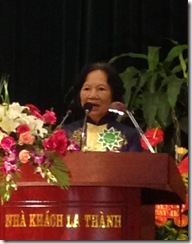 Another moving address was from a beautiful lady (Mrs. Tran Thi Bich) who was the second Hanoi Baha’i, having been enrolled 20 years ago by the first believer, Dr. Dao An Son. Sadly, the latter’s whereabouts are currently unknown, although the National Spiritual Assembly made every effort to find her during the lead-up to the celebration.
Another moving address was from a beautiful lady (Mrs. Tran Thi Bich) who was the second Hanoi Baha’i, having been enrolled 20 years ago by the first believer, Dr. Dao An Son. Sadly, the latter’s whereabouts are currently unknown, although the National Spiritual Assembly made every effort to find her during the lead-up to the celebration.
There were stage performances of various kinds – guitar, dance, vocal – all of them excellent. There was a beautiful slide show, highlighting the events that gave birth to the Hanoi Baha’i community, as well as its two decades of growth and progress since that time. The slides included several from the presentation prepared by Zabine (see the previous article on this web site).
At the appropriate point, Zabine herself was invited to stand and was introduced befittingly. As noted earlier, she can rightly be regarded as mother of the Hanoi Baha’i community, having enrolled that city’s first believer in 1992. (See previous article for details.) Although she received rousing applause from the audience, she was unable to address the convention: Her visa did not arrive in time for her to seek and obtain government clearance for such an address.
After the celebration, we found ourselves in a sea of tearful goodbyes. Language and culture aside, the high emotions would have been familiar to anyone who has experienced the close of any Baha’i school, conference, or other large gathering: No one wanted to go. But time moves on, and hotel rooms must be cleared for the next gathering.
We went for lunch, later, at a nice restaurant with a large group of celebration attendees. While I ate, Zabine mostly ignored her food in favor of negotiating Very Great Things with a prominent Thailand Baha’i. Her newfound friend, Rosalie Huibonhua, watched from across the table with growing concern and finally told me, “We have to make this woman eat!” I was like, “You think I can make Zabine do anything?”
Well, of course I can’t – and I’m pretty sure that’s the way things are supposed to be.
